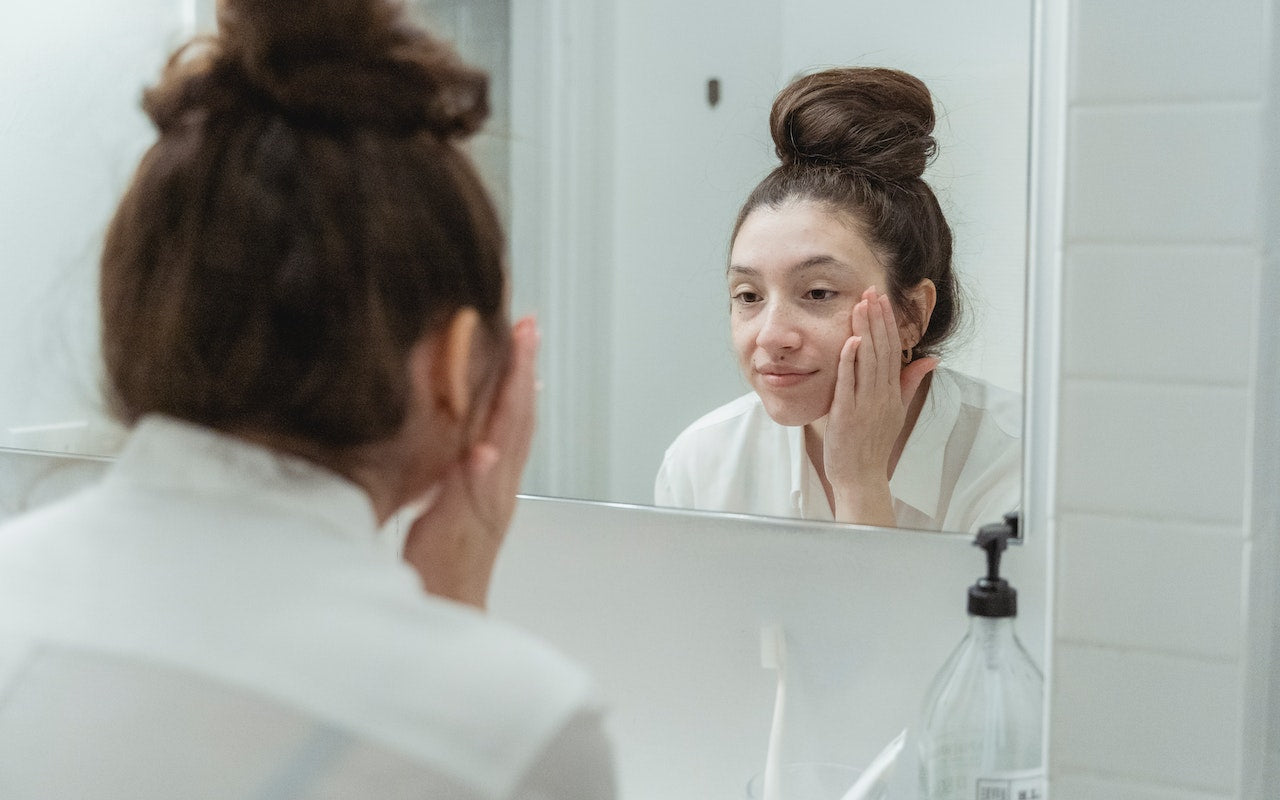Collagen in the skin contributes to firmness and elasticity. Due to the elastic nature of the skin, it remains flexible and bounces back easily. However, this elasticity reduces with age. The reason behind firmness and elasticity depletion is collagen loss. Besides, the thinning epidermis adds to the appearance of wrinkles and fine lines.
The repair and regeneration also decrease as the skin loses firmness and elasticity. This may cause the skin to bruise and scar easily. Therefore, healthy skin is more than just a cosmetic requirement. Learn all about collagen cross-linking and how to enhance skin elasticity with non-invasive measures.
Understanding Collagen in Skin Aging
The collagen in the skin is a protein that holds the cells and muscles together. Many factors, such as age, sun exposure, and genetics, impact the collagen in the dermis. Over time, the skin stops producing collagen, leading to aging signs such as hyperpigmentation, wrinkles, fine lines, and thin skin.
Collagen cross-linking is also responsible for causing these aging signs. Due to this, the skin loses elasticity. Keep reading to learn more about skin aging due to collagen depletion.
Collagen cross-linking and its effect
Collagen cross-linking is a significant factor in chronological aging. As we know, collagen reduces with age, and the skin becomes saggy and develops fine lines. The collagen cross-linking in the skin is partially responsible for these age-related changes.
According to the research, the cross-linking of the protein present in arteries causes atherosclerosis. This hardens the arteries with age. In a study, human skin was studied to learn more about cross-linking. The results concluded there was an increase in insoluble cross-linked collagen from birth to maturation.
This cross-linked structure is known as histidino-hydroxyly-sinonorleucine and may be present in different volumes depending on the age. Moreover, the oxidative stress in the skin may trigger a chain reaction where collagen starts cross-linking and hardening. Here, one collagen fiber will fuse with another to result in a stiff and hard structure.
This hardened cross-linked collagen will not lessen nutrition from passing through and prevent any waste repair in the skin. As a result, the skin becomes visibly old and saggy. The contiguous collagen fibers present in the skin help in biological function and cell repair activities. However, due to cross-linking, these structures no longer support the homeostasis in tissues. Besides, the extracellular matrix (ECM) connective tissue is also different in healthy and aged skin.
Factors Impacting Skin Firmness and Elasticity
Here are some factors that affect skin firmness and elasticity:
Oxidative stress
Our skin has an antioxidant system to fight the oxidants. When the oxidants increase more than the antioxidant capacity in the skin, they cause inflammation. Collagen depletion, cross-linking, and disorganizing cell functions. Various external and internal functions impact the oxidative stress in the skin.
Sun damage
Sun damage, primarily caused by UV radiation, leads to a loss in skin elasticity through photoaging. UV rays penetrate the skin, triggering the breakdown of collagen and elastin fibers, which are crucial for the skin's firmness and suppleness.
This degradation impairs the skin's ability to bounce back, resulting in sagging, wrinkles, and fine lines. Additionally, UV exposure prompts the production of harmful free radicals, causing oxidative stress and further damaging the skin's structural proteins. Over time, this cumulative damage weakens skin elasticity, accelerating the aging process and making the skin more vulnerable to environmental stressors.
Lifestyle habits
Lifestyle habits such as staying inactive, smoking, and alcohol consumption contribute to a loss of skin elasticity. Smoking exposes the skin to toxic chemicals that constrict blood vessels, reducing oxygen and nutrient flow to skin cells. This impedes collagen production and breaks down elastin fibers, leading to sagging, premature wrinkles, and a dull complexion.
Excessive alcohol consumption dehydrates the body, depriving the skin of vital moisture and hindering its ability to repair and regenerate. Furthermore, alcohol can dilate blood vessels, causing redness and inflammation. These habits accelerate the aging process, diminishing skin elasticity and promoting a tired, aged appearance.
Lack of nutrition
Not consuming a healthy mineral and vitamin-rich diet may lead to deficiencies. It directly impacts the health of the skin and leads to faster degeneration of cells. Lack of nutrients and vitamins can cause skin dryness and wound healing, hence reducing the elasticity and firmness. In addition, consuming processed and unhealthy food impacts internal health, and that shows up as early degeneration of tissues.
How to Enhance Skin Elasticity and Firmness?
The goal is to reduce external and internal stressors that cause collagen cross-linking. Here are some ways to support skin elasticity and firmness
Non-invasive therapies
If you wish to have the effect of a face lift without going under the knife, delving into non-invasive skin therapies is a great idea. As skin elasticity and firmness reduce with age, therapies such as radiofrequency, microcurrent, and LED can generate collagen in the skin.

Several clinical trials support the claim of these devices and have shown significant positive results. For instance, microcurrent can regenerate collagen in the skin by stimulating fibroblast activity. Red LED improves skin flexibility by promoting healing as it penetrates deep into the dermis.
Staying active and eating well
Moving your body and enriching it with a good diet will make you feel and look good. Consuming a diet full of vitamins, antioxidants, good fats, and minerals will nourish and repair the skin from within. Add superfoods to boost collagen, antioxidants, and vitamin levels in the body.
Protecting the skin
Protecting your skin from UV rays, pollution, and harsh weather is essential for maintaining elasticity and firmness. The UV rays photoage the skin, generally leading to aging signs and dark spots. Wear sunblock, hats, and scarves to protect the skin when stepping out.
Retinol application
There is scientific evidence that retinol can stimulate collagen and elastin production in the skin. This can help in reversing aging signs due to photodamage. Adding retinol to the night skincare routine can rebuild collagen in the skin.
At-Home Collagen Stimulation Red LED Therapy
When we talk about collagen-stimulating therapy, red light treatment is an effective one. Red LED is capable of skin rejuvenation as it penetrates 2-4mm into the dermis. With a wavelength range of 620 to 750 nm, the skin is able to absorb the light energy. This reaches mitochondria and kickstarts the ATP and fibroblast generation.
Both of these are energy sources for cell functions and aid in stimulating collagen. Moreover, the damaged cells are able to recover quickly, contributing to healthy skin cells.

A recent study concluded the positive impact of red LED therapy on skin. One hundred thirty-six participants were included in the study, and 113 of these were divided into four groups. They were given different wavelength LED therapy, like 611–650 or 570–850 nm polychromatic light, which was normalized to ∼9 J/cm2 in the range of 611–650 nm.
The duration of these treatments also varied as per the groups. After the treatment of thirty sessions, the blind data was collected using collagen density of the skin, photography, digital profilometry, and self-assessment.
As per the results, there was an improvement in the skin complexion, texture, and collagen in those who were treated with red LED.
Choosing the at-home therapy device
We suggest using the EvenSkyn Mirage LED face mask that is built with 204 professional-grade LEDs. The mask works as a photobiomodulation technique to treat the photoaged skin. It has a potent power of up to 500 joules.
The mask comes with 3 light modes–red, blue, and yellow. The red LED is ideal for collagen stimulation and reducing the appearance of fine lines. Blue light is for acne reduction as it is known to diminish acne-causing bacteria from the skin. Lastly, yellow light is for total skin rejuvenation by promoting healing.

This total rejuvenation of the skin makes it firm and elastic. The mask is designed with an ergonomic adjustable strap and eye protection for safe use. In addition, it is certified by the FDA, Health Canada, RoHS, CE, and BSCI. So, if you are looking for an at-home LED therapy, it's a durable and safe choice.
Using the mask is super easy! Just clean your face and dry it. Wear the mask, adjusting it snugly on your face. Turn on the mask using the remote. You may use the remote to control the light color and intensity. The remote control can change the colors as per your needs.
Moreover, the mask also has an automatic feature that changes the light color for total skin rejuvenation. We recommend using the mask three times a week for 25 minutes for a full facial session. With consistent use for 6-8 weeks of use, you may notice an improvement in fine lines and texture.
Wrapping Up
Now you know what decreases elasticity in the skin and how to repair the collagen cross-linking damage. Some skin changes are inevitable due to aging, UV exposure, and gravity; however, introducing effective measures may help your skin look younger and radiant. With continuous use of non-invasive red LED therapy in tandem with skin protection and healthy lifestyle choices, you may improve skin firmness and elasticity.
References:
- Vishal Vohra; Sahib Tuteja; Bharat Gurnani; Harshika Chawla. "Collagen Cross Linking for Keratoconus." June 2023
- Park S. "Biochemical, structural and physical changes in aging human skin and their relationship. Biogerontology." June 2022
- Piersma, Bram; Bank, Ruud A. "Collagen cross-linking mediated by lysyl hydroxylase." 2019
- Rinnerthaler M, Bischof J, Streubel MK, Trost A, Richter K. “Oxidative stress in aging human skin. Biomolecules." April 2015
- Schagen SK, Zampeli VA, Makrantonaki E, Zouboulis CC. "Discovering the link between nutrition and skin aging. Dermatoendocrinol." July, 2012
- Varani J, Dame MK, Rittie L, Fligiel SE, Kang S, Fisher GJ, Voorhees JJ. "Decreased collagen production in chronologically aged skin: roles of age-dependent alteration in fibroblast function and defective mechanical stimulation." Am J Pathol. June 2006
- Mukherjee S, Date A, Patravale V, Korting HC, Roeder A, Weindl G. "Retinoids in the treatment of skin aging: an overview of clinical efficacy and safety." 2006
- Wunsch A, Matuschka K. "A controlled trial to determine the efficacy of red and near-infrared light treatment in patient satisfaction, reduction of fine lines, wrinkles, skin roughness, and intradermal collagen density increase." 2014 Feb
- Opel DR, Hagstrom E, Pace AK, Sisto K, Hirano-Ali SA, Desai S, Swan J. "Light-emitting Diodes: A Brief Review and Clinical Experience." June 2015
- Gold MH, Andriessen A, Biron J, Andriessen H. Clinical Efficacy of Self-applied Blue Light Therapy for Mild-to-Moderate Facial Acne. J Clin Aesthet Dermatol. March 2009










Leave a comment
All comments are moderated before being published.
This site is protected by hCaptcha and the hCaptcha Privacy Policy and Terms of Service apply.